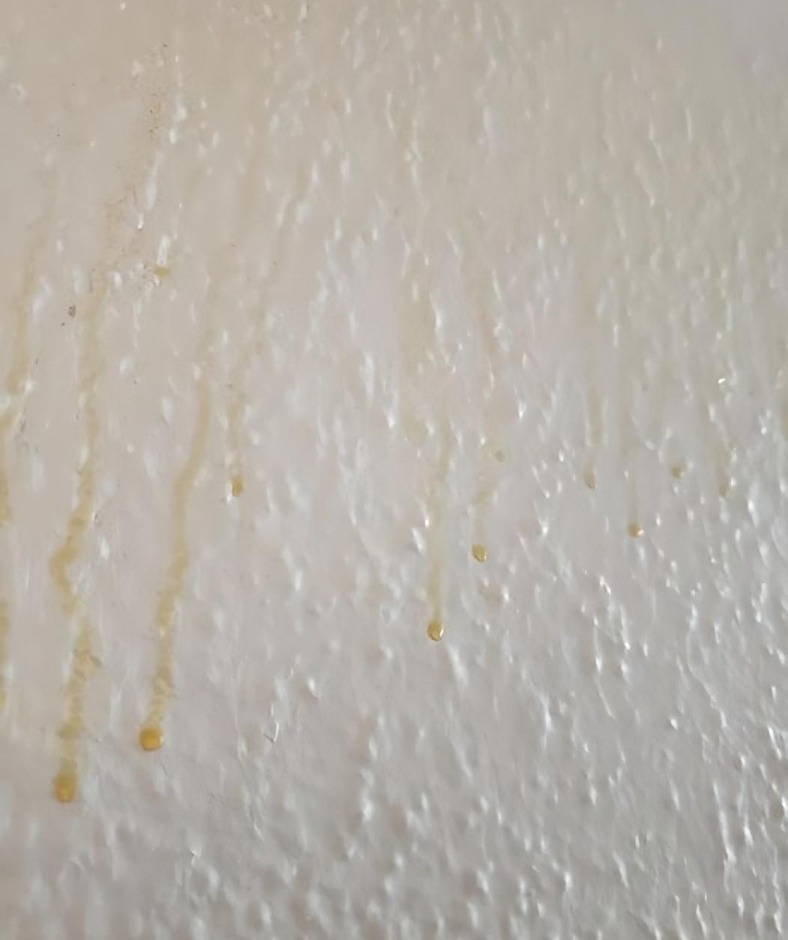If you’ve recently spotted yellow drips trickling down your bathroom walls, it’s natural to feel alarmed. Bathrooms are meant to be clean, refreshing spaces, but these unsightly stains can be puzzling and unsettling. Naturally, you might wonder, “What’s causing this?” Don’t fret—you’re not alone. Many homeowners face similar issues, and the good news is that solutions exist. This article will explore the likely causes of yellow drips and provide effective ways to resolve the problem.

Could Mold Be the Culprit? Why It’s a Serious Concern
One of the most common issues in bathrooms is mold. This fungus thrives in moist environments, making bathrooms an ideal breeding ground. Mold spores latch onto damp surfaces, spreading quickly if left unchecked. While it might seem harmless at first, certain types of mold can lead to severe health risks. Mold exposure can trigger allergies, cause respiratory problems, and even lead to chronic health conditions.
If the yellow drips on your walls are accompanied by a musty smell or an increase in allergy symptoms when entering the bathroom, mold might be to blame. Bathrooms provide warm, humid conditions—exactly what mold needs to grow.
What Causes Mold to Appear in Bathrooms?
Mold in bathrooms is often less about “if” and more about “when.” After a steamy shower, moisture condenses on walls, ceilings, and tiles. Without proper ventilation, this moisture remains trapped, creating an ideal environment for mold. Even if you clean regularly, mold can hide in hard-to-reach places, such as behind toilets, under sinks, or on ceilings.
Sometimes, mold appears as yellow or black streaks. It can grow near windows, on shower curtains, and even around plumbing fixtures. If yellow drips are visible, it’s likely that mold has already infiltrated your bathroom walls.
Other Potential Causes of Yellow Drips
While mold is a common culprit, it’s not the only reason yellow drips might appear. Let’s examine other possibilities:
- Nicotine Residue
If former residents of your home smoked indoors, nicotine could be the cause. Over time, nicotine residue can seep through paint, especially in high-moisture areas like bathrooms. Even if the walls have been repainted, nicotine can persist and resurface, leaving yellow stains behind. - Soap Scum and Hard Water Deposits
A combination of soap scum and hard water can also leave yellow streaks. Minerals in hard water build up over time, and when mixed with soap residue, they can form discolored streaks on walls and other bathroom surfaces. - Yellow Mold or Mildew
Not all mold is black; some varieties appear yellow. Yellow mold can grow on bathroom walls, especially in areas with soap scum or constant moisture. It’s just as harmful as black mold, so addressing it quickly is crucial.
How to Prevent and Remove Yellow Drips in Your Bathroom
To keep your bathroom free of mold, mildew, and other yellowing issues, proactive maintenance is essential. Here are some practical tips:
Prevention Strategies
- Enhance Ventilation
Proper ventilation is key. Use exhaust fans during and after showers, keep windows open when possible, and leave the bathroom door slightly ajar to allow moisture to escape. - Dry Surfaces After Use
After showering, take a moment to wipe down walls, tiles, and other damp surfaces. This simple habit can significantly reduce the risk of mold growth. - Choose Mold-Resistant Paint
If you’re planning to repaint your bathroom, invest in mold-resistant paint. This type of paint is designed to prevent mold from adhering to and growing on walls. - Clean Regularly
Frequent cleaning is crucial. Use bathroom-specific cleaning products to target mold, soap scum, and hard water deposits before they escalate into a bigger problem.
Removing Mold: Step-by-Step
If mold is already present on your bathroom walls, there’s no need to panic. Here’s how to deal with it effectively:
- Bleach Solution
For tiles and other non-porous surfaces, mix one cup of bleach with a gallon of water. Scrub the affected areas thoroughly and ensure the room is well-ventilated while cleaning. - Natural Alternatives
For those avoiding harsh chemicals, natural options like vinegar or hydrogen peroxide are effective. Spray the solution on the mold, let it sit, then scrub clean. - Protect Yourself
Always wear gloves and a mask when cleaning mold. This minimizes exposure to spores and harsh cleaning agents. - Seek Professional Help if Necessary
If the mold infestation is widespread or deeply embedded in walls, call a professional. Experts have the tools and expertise to thoroughly remove mold, preventing future growth.
Conclusion: Address Yellow Drips Before They Worsen
Yellow drips on your bathroom walls are a warning sign that something isn’t right. Whether caused by mold, nicotine residue, soap scum, or hard water deposits, addressing the issue promptly is crucial. Regular maintenance, improved ventilation, and early intervention can prevent minor problems from becoming major headaches.
If you notice yellow streaks, don’t delay. Take immediate steps to identify and eliminate the source, and don’t hesitate to call in professionals for more severe cases. With proactive care, you can ensure your bathroom remains a clean, safe space for you and your family.





